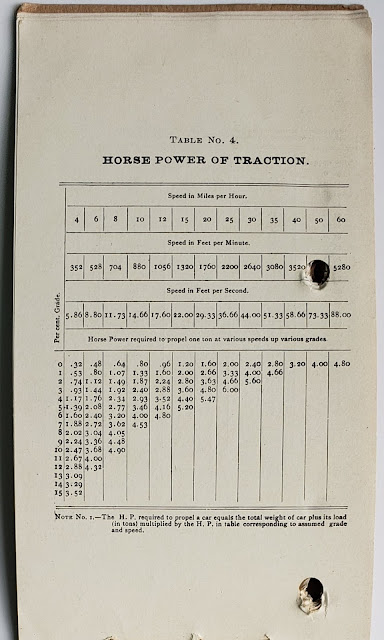Front cover of a small booklet (5.5" x 3") with info inside about the
John Stephenson Company, Ltd., Car Builder, New York
There is no year shown anywhere on or inside the booklet. Based on
the "Ltd," we know that the "Ltd" was removed from the company
name after the company was sold in 1900 and incorporated in New Jersey
in 1901. In addition, there is a double page with the company
"Tower Clock" photo. This clock was built on company property
New Jersey, where a new plant for building cars was built in 1896.
So, it is likely this booklet was made within the mid-to-late 1890s timeline.
Seashore Trolley Museum in Kennebunkport, Maine,
is currently restoring this 1901 John Stephenson Company-
built car, No. 41 of the Lexington & Boston Street
Railway. John L. Middleton photo 1905
This 1906 John Stephenson Company-built car, No. 1160 of
the Connecticut Company was acquired by Seashore
Trolley Museum in 1948 and is one of the passenger
cars in service regularly. Here it is on July 28, 2023.
Dan Vardaro photo
The John Stephenson Company was founded in 1831. The company initially built steam railroad coaches and omnibuses and over the years became most famous for the construction of horsecars. The company transitioned to building electric streetcars. The corporate name was adjusted as changes in ownership took place in the 1870s. John Stephenson Company, Limited, would continue operations in New York. John Stephenson died in 1893 and in 1896, construction of a new plant in New Jersey began. The new plant was producing cars by 1898. It was in financial trouble and sold at auction in 1900. The "Limited" portion of the name of the company was dropped in 1901. The company continued to struggle financially and was sold again in 1905. This time to J. G. Brill Company.
Brill kept the name, but the financial struggles continued. Sporadic closings were followed by the plant's final closing in 1912. The plant was sold in 1919.
This image was not in the booklet. I included it so readers could
see where the "Clock Tower" was located on the plant property.
The last page of the booklet
~~~~~~~~~~~~~~~
We continue the restoration work on the 1912, Narcissus, the only surviving high-speed, luxury interurban coach of the Portland-Lewiston Interurban.
Click Here: Narcissus Restoration-Related Posts
Being more than a century old, the stately, "Elegant Ride," Narcissus, is a gem. This shimmering precious stone of Maine transportation history is brilliantly resplendent as it emanates so many elements of history, including; time, places, people, and events, that it was coupled to, that when just a smattering of its seemingly innumerable stories are shared, the contents captivates, fascinates, then generates, interest to learn more 🙋. The majestic Narcissus is listed in the National Register of Historic Places.
Please consider joining the epic journey to complete the Narcissus Project by making a donation today!
Click Here: Donation Options
The restoration of this majestic icon of Maine's electric railway history is but one in a series of captivating stories containing an abundance of incredible coalition of narratives.
Click Here: History-Related Posts - Narcissus and Portland-Lewiston Interurban
The Narcissus is featured in the national Gold Award-winning novel, Teddy Roosevelt, Millie, and the Elegant Ride. The "Elegant Ride" is the Narcissus. Theodore Roosevelt was a passenger on the Narcissus on August 18, 1914, between Lewiston and Portland, Maine, while campaigning for the Progressive Party candidates.
Click Here: Bookstores and Businesses promoting the Narcissus Project
Independent book publisher, Phil Morse, holding
the Gold Book Award Winner plaque for
the Middle Reader category for The Eric
Hoffer Book Award. Congratulations to
award-winning Maine author,
Jean M. Flahive
























No comments:
Post a Comment
Note: Only a member of this blog may post a comment.